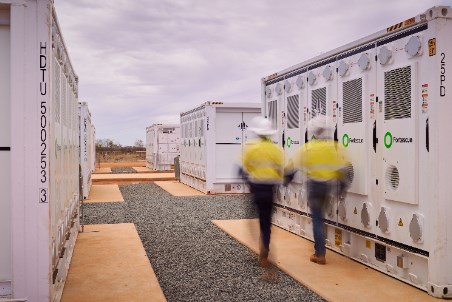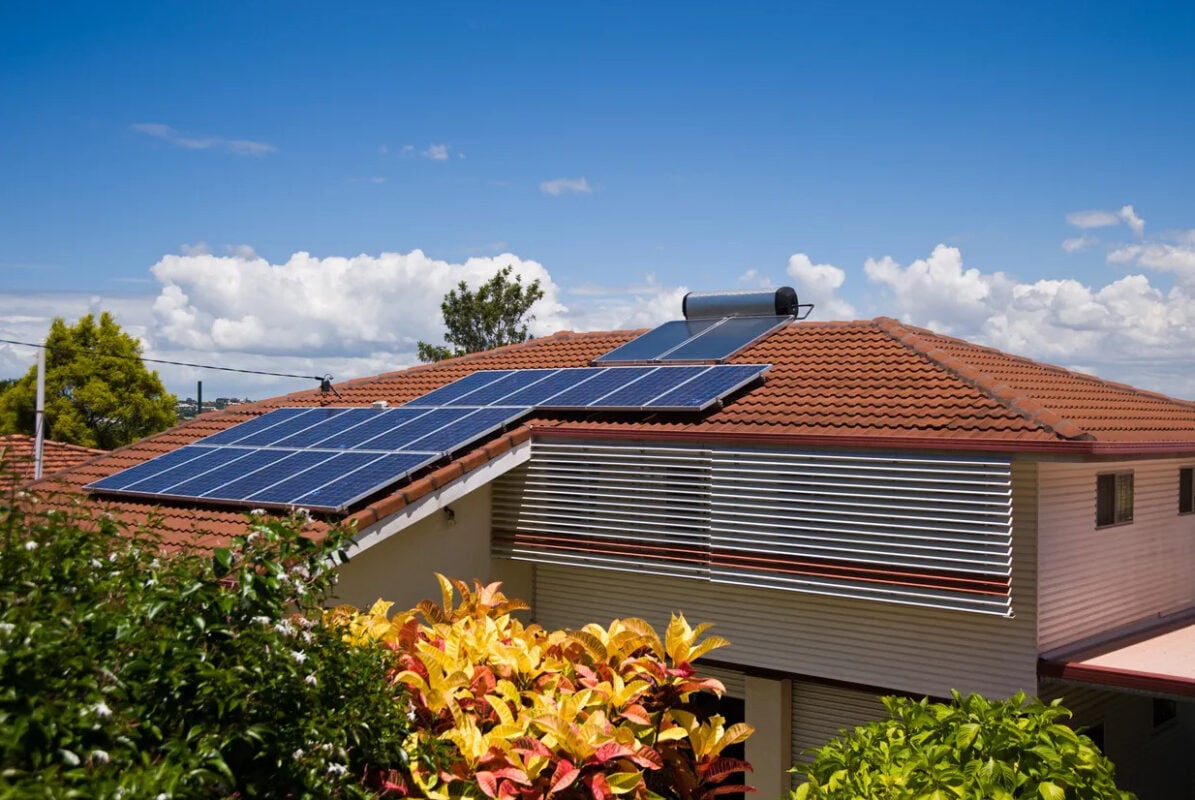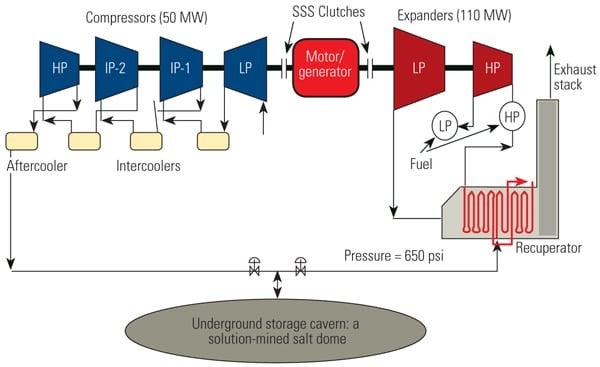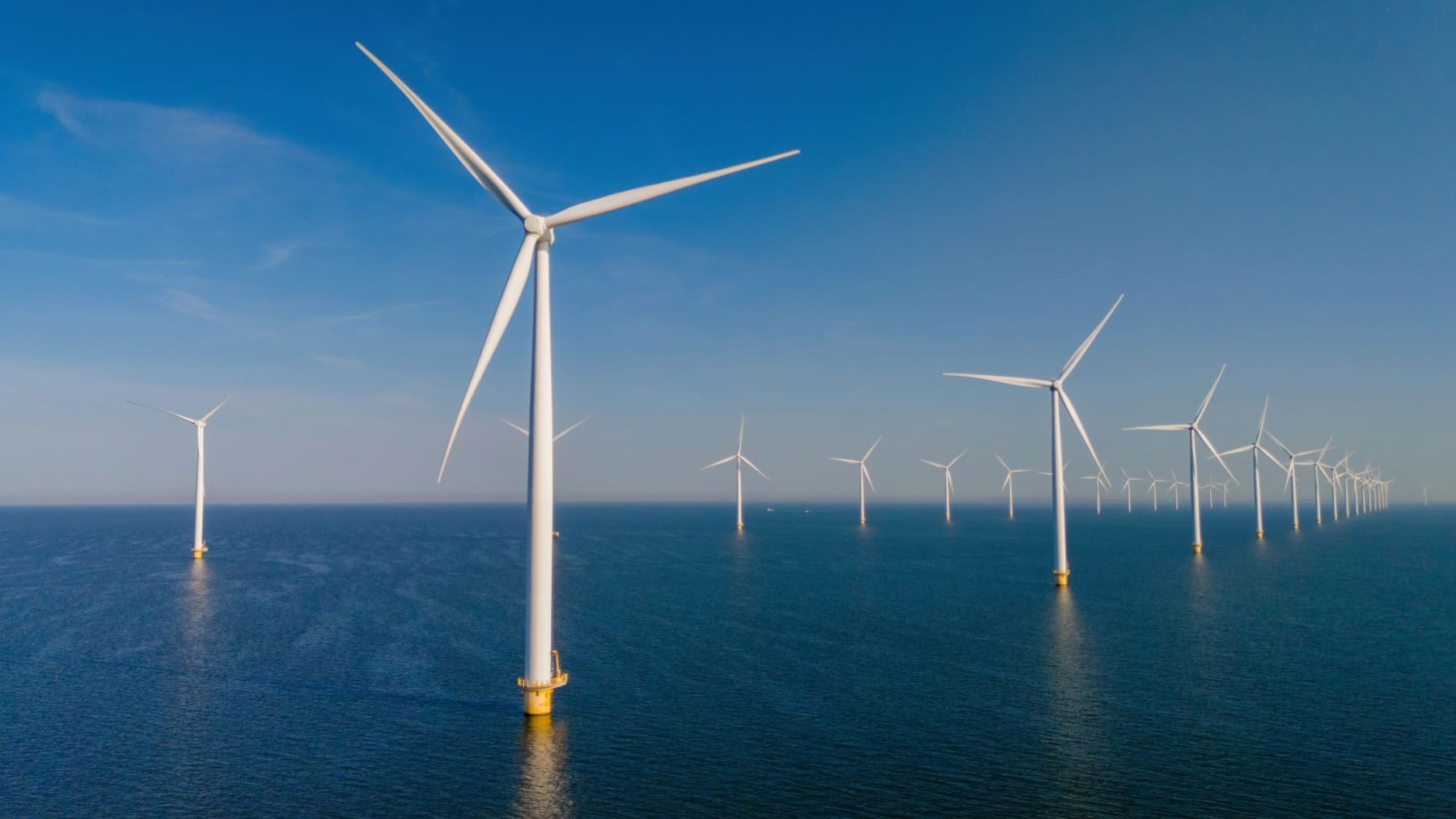Hybrid Solar Wind Energy Storage Market Size, Share, Trends & Forecast 2032 – SkyQuest Technology

Report on the Global Hybrid Solar Wind Energy Storage Market and its Contribution to Sustainable Development Goals
Executive Summary: Market Growth and Alignment with Global Sustainability Targets
The Global Hybrid Solar Wind Energy Storage Market is undergoing significant expansion, directly contributing to the achievement of several United Nations Sustainable Development Goals (SDGs). The market was valued at USD 6.8 billion in 2023 and is projected to reach USD 17.11 billion by 2032, expanding at a Compound Annual Growth Rate (CAGR) of 10.8%. This growth is fundamentally linked to the global imperative for clean, reliable, and affordable energy, as outlined in SDG 7 (Affordable and Clean Energy) and SDG 13 (Climate Action). The transition towards these hybrid systems is accelerated by technological innovation, supportive government policies, and increasing environmental awareness, which collectively advance SDG 9 (Industry, Innovation, and Infrastructure) and SDG 11 (Sustainable Cities and Communities).
Market Dynamics: Drivers and Restraints in the Context of Sustainable Development
Market Drivers
- Advancements in Energy Storage Technologies: Innovations in battery technologies, including lithium-ion and solid-state batteries, are critical for ensuring a stable and reliable supply of renewable energy. This directly supports SDG 7 by overcoming the intermittency of solar and wind power, making clean energy a viable 24/7 solution for industries and communities.
- Supportive Government Policies and Incentives: Governments worldwide are implementing policies such as tax credits and subsidies to accelerate the transition to renewable energy. These measures, driven by commitments to SDG 13, de-risk private investment and make hybrid systems more economically attractive, thereby fostering sustainable economic growth (SDG 8).
Market Restraints
- High Initial Capital Investment: The substantial upfront costs associated with the installation and integration of hybrid systems pose a significant barrier. Overcoming this financial challenge is crucial to democratizing access to clean energy and fully realizing the objectives of SDG 7, particularly in developing economies.
- Complex System Integration: The technical challenges of integrating disparate energy sources (solar, wind) with storage systems require sophisticated engineering and advanced control systems. Addressing these complexities is essential for building resilient and sustainable infrastructure as envisioned in SDG 9.
Technological Advancements and Their Role in Sustainability
The Impact of Artificial Intelligence (AI)
Artificial Intelligence is a transformative force in the market, enhancing the efficiency and reliability of hybrid energy systems. Its application directly contributes to several SDGs:
- SDG 7 (Affordable and Clean Energy): AI algorithms optimize energy capture by accurately forecasting solar irradiance and wind speeds. AI-driven energy management systems balance energy distribution between grids and batteries, maximizing efficiency.
- SDG 9 (Industry, Innovation, and Infrastructure): AI facilitates predictive maintenance by detecting anomalies, which reduces system downtime and operational costs, leading to more resilient and efficient energy infrastructure.
- SDG 12 (Responsible Consumption and Production): By ensuring optimal use of generated energy and minimizing waste, AI promotes more sustainable production and consumption patterns.
Integration of Advanced Digital Technologies
The integration of IoT, blockchain, Augmented Reality (AR), and Virtual Reality (VR) is further modernizing the sector.
- IoT: Enables real-time monitoring of system components, ensuring operational efficiency.
- Blockchain: Provides a secure and transparent ledger for energy trading and distribution, enhancing grid compliance.
- AR/VR: Used for training technicians in a safe, simulated environment, building a skilled workforce for the green economy (SDG 8).
Market Segmentation Analysis
By Technology
- Solar Photovoltaic: This segment is experiencing rapid growth due to declining costs and increasing efficiency, making clean energy more accessible and affordable in line with SDG 7.
- Wind Turbines: Preferred for their ability to generate power continuously, including at night, wind turbines enhance energy security and grid stability, which are crucial for supporting sustainable industrialization (SDG 9).
By Storage Type
- Batteries: The dominant segment due to their scalability and flexibility. Batteries are essential for storing excess renewable energy, ensuring a consistent power supply for sustainable cities and communities (SDG 11).
- Pumped Hydro Storage: A fast-growing segment valued for its long-duration storage capabilities, which are vital for grid balancing and supporting large-scale integration of renewables.
Regional Insights and Contributions to Global Goals
North America
North America leads the market, driven by ambitious net-zero emission targets and strong policy support that align with SDG 13. The region’s investment in renewable infrastructure and technological innovation reinforces its commitment to SDG 7 and SDG 9.
Europe
As the fastest-growing region, Europe’s market expansion is fueled by its strong commitment to decarbonization and energy independence. The continent’s adoption of Industry 4.0 principles in the energy sector provides a model for achieving sustainable industrial development (SDG 9) and climate action (SDG 13).
Asia-Pacific
The Asia-Pacific region is an emerging market, balancing rapid industrialization and rising electricity demand with sustainability goals. The deployment of hybrid systems is a strategic approach to ensure a reliable power supply while advancing SDG 7 and supporting the development of resilient infrastructure (SDG 9).
Competitive Landscape and Corporate Responsibility
The market is characterized by intense competition among global players who are increasingly focusing on innovation and strategic partnerships. Companies are investing heavily in R&D to develop more efficient and cost-effective solutions, directly contributing to the technological advancements needed to achieve global sustainability targets. Key players include Siemens Gamesa, General Electric, and Suzlon Energy, whose corporate strategies are increasingly aligned with providing solutions for a low-carbon future.
Recent Developments
- March 2025: Siemens Gamesa secured a contract for 400 MW offshore wind turbines in Taiwan, demonstrating the scaling of renewable energy projects.
- February 2025: GE Renewable Energy deployed its Haliade-X 14 MW turbines, pushing the boundaries of clean energy technology.
- June 2024: Suzlon completed a repowering project in India, enhancing the efficiency of existing renewable assets.
Key Market Trends Supporting Sustainability
- Growing Adoption of AI and Digital Technologies: The trend towards digitalization enhances the operational efficiency and predictive capabilities of hybrid systems, making renewable energy a more reliable and intelligent power source.
- Rapid Cost Declines in Renewable Technologies: The decreasing costs of solar panels, wind turbines, and batteries are making hybrid systems a mainstream, economically viable choice for sustainable energy generation, accelerating progress towards SDG 7.
Analysis of Sustainable Development Goals in the Article
1. Which SDGs are addressed or connected to the issues highlighted in the article?
-
SDG 7: Affordable and Clean Energy
The entire article is centered on hybrid solar and wind energy storage, which are key components of clean energy systems. It discusses the rising global demand for clean energy, cost reductions in solar panels and wind turbines, and technological advancements aimed at making renewable energy more reliable and accessible.
-
SDG 9: Industry, Innovation, and Infrastructure
The article extensively details the role of innovation in the hybrid energy market. It highlights the integration of advanced technologies such as Artificial Intelligence (AI), machine learning, IoT, and advanced battery storage. This focus on technological upgrading and building resilient, sustainable infrastructure is central to SDG 9.
-
SDG 13: Climate Action
The primary driver for the growth of the hybrid solar wind energy storage market, as mentioned in the article, is the need to combat climate change. The text references regional ambitions to “achieve net zero greenhouse gas emission” and a “growing focus on reducing carbon emissions,” directly aligning with the goals of climate action.
-
SDG 8: Decent Work and Economic Growth
The article provides a detailed economic analysis of the market, projecting its growth from “USD 6.8 billion in 2023” to “USD 17.11 billion by 2032” at a “CAGR of 10.8%”. This substantial economic growth, driven by a sustainable industry, contributes to overall economic productivity and development.
-
SDG 17: Partnerships for the Goals
The article mentions the importance of partnerships in driving the market forward. It notes that “governments worldwide are promoting renewable and clean energies” through policies and incentives that attract “private investors.” It also describes how companies form “strategic collaborations and joint ventures with technology providers and battery manufacturers” to achieve shared goals.
2. What specific targets under those SDGs can be identified based on the article’s content?
-
Target 7.2: Increase substantially the share of renewable energy in the global energy mix.
The article’s focus on the rapid growth of the hybrid solar and wind energy market, driven by “rising global demand for clean energy,” directly supports this target. The expansion of these technologies into residential, commercial, industrial, and utility sectors signifies an increasing share of renewables.
-
Target 7.a: Enhance international cooperation to facilitate access to clean energy research and technology.
The article discusses how “favorable government policies such as incentives, tax benefits, and subsidies” are promoting the adoption of renewable energy globally. This represents a form of cooperation and financial flow aimed at advancing clean energy technology.
-
Target 9.4: Upgrade infrastructure and retrofit industries to make them sustainable… with greater adoption of clean and environmentally sound technologies.
The text describes the “electrification of various industries such as transportation, automotive, and aerospace” and the adoption of hybrid energy solutions. It also mentions Germany’s initiative of “repowering old wind farms by pairing them with solar storage,” which is a clear example of retrofitting industries for sustainability.
-
Target 9.5: Enhance scientific research, upgrade the technological capabilities of industrial sectors… encouraging innovation.
This target is addressed by the article’s emphasis on companies “heavily investing in research and development to integrate advanced battery technologies” and the use of AI, machine learning, and IoT to “enhance performance, precision, and design of hybrid solar wind energy storage solutions.”
-
Target 13.2: Integrate climate change measures into national policies, strategies and planning.
The article provides multiple examples of this, such as North America’s “supportive policy framework” for net-zero emissions, the US government’s mandate for renewable energy use, and Europe’s “decarbonization commitment,” all of which are national or regional strategies to combat climate change.
3. Are there any indicators mentioned or implied in the article that can be used to measure progress towards the identified targets?
-
Indicator for Target 7.2: Renewable energy share in the total final energy consumption.
While a specific percentage is not given, the market’s projected growth rate (“CAGR of 10.8%”) and increasing market size (from USD 6.8 billion to USD 17.11 billion) serve as strong proxy indicators for the increasing adoption and share of renewable energy.
-
Indicator for Target 9.4: CO2 emission per unit of value added.
The article implies progress on this indicator by highlighting the global shift towards “clean energy” and “reducing carbon emissions.” The entire purpose of adopting hybrid solar-wind technology is to provide energy with a lower carbon footprint, thereby reducing CO2 emissions per unit of economic value generated.
-
Indicator for Target 9.5: Research and development expenditure as a proportion of GDP.
The article implies this through its description of companies “heavily investing in research and development” and the competitive landscape being driven by “innovation.” The development of AI-driven algorithms, advanced batteries, and smart energy management systems are direct outcomes of such R&D expenditure.
-
Indicator for Target 13.2: Number of countries with nationally determined contributions, long-term strategies, national adaptation plans and adaptation communications.
The article explicitly mentions supportive policies and strategies in multiple regions and countries, including the US, Canada, UK, Germany, France, China, and India. These “favorable government policies,” “decarbonization commitments,” and “ambitious sustainable energy policies” are direct examples of national strategies that can be counted for this indicator.
4. Table of SDGs, Targets, and Indicators
| SDGs | Targets | Indicators |
|---|---|---|
| SDG 7: Affordable and Clean Energy | 7.2: Increase substantially the share of renewable energy in the global energy mix. | The market growth rate (CAGR of 10.8%) and the projected increase in market value to USD 17.11 billion by 2032, indicating rising adoption of renewable energy. |
| SDG 9: Industry, Innovation, and Infrastructure | 9.4: Upgrade infrastructure and retrofit industries to make them sustainable… with greater adoption of clean and environmentally sound technologies. | Adoption of hybrid solar wind energy solutions across industrial, commercial, and utility sectors; repowering old wind farms with solar storage. |
| 9.5: Enhance scientific research, upgrade the technological capabilities of industrial sectors… encouraging innovation. | Heavy investment in R&D; integration of AI, IoT, and advanced battery technologies to optimize energy systems. | |
| SDG 13: Climate Action | 13.2: Integrate climate change measures into national policies, strategies and planning. | Mention of “supportive policy framework,” “decarbonization commitment,” and “ambitious sustainable energy policy” in regions like North America, Europe, and Asia-Pacific. |
| SDG 8: Decent Work and Economic Growth | 8.2: Achieve higher levels of economic productivity through diversification, technological upgrading and innovation. | The market’s projected financial growth from USD 6.8 billion to USD 17.11 billion, driven by technological advancements in the clean energy sector. |
| SDG 17: Partnerships for the Goals | 17.17: Encourage and promote effective public, public-private and civil society partnerships. | Mention of government incentives attracting private investors, and companies forming “strategic collaborations and joint ventures.” |
Source: skyquestt.com

What is Your Reaction?
 Like
0
Like
0
 Dislike
0
Dislike
0
 Love
0
Love
0
 Funny
0
Funny
0
 Angry
0
Angry
0
 Sad
0
Sad
0
 Wow
0
Wow
0



















































.jpg.webp?itok=0ZsAnae9#)


























